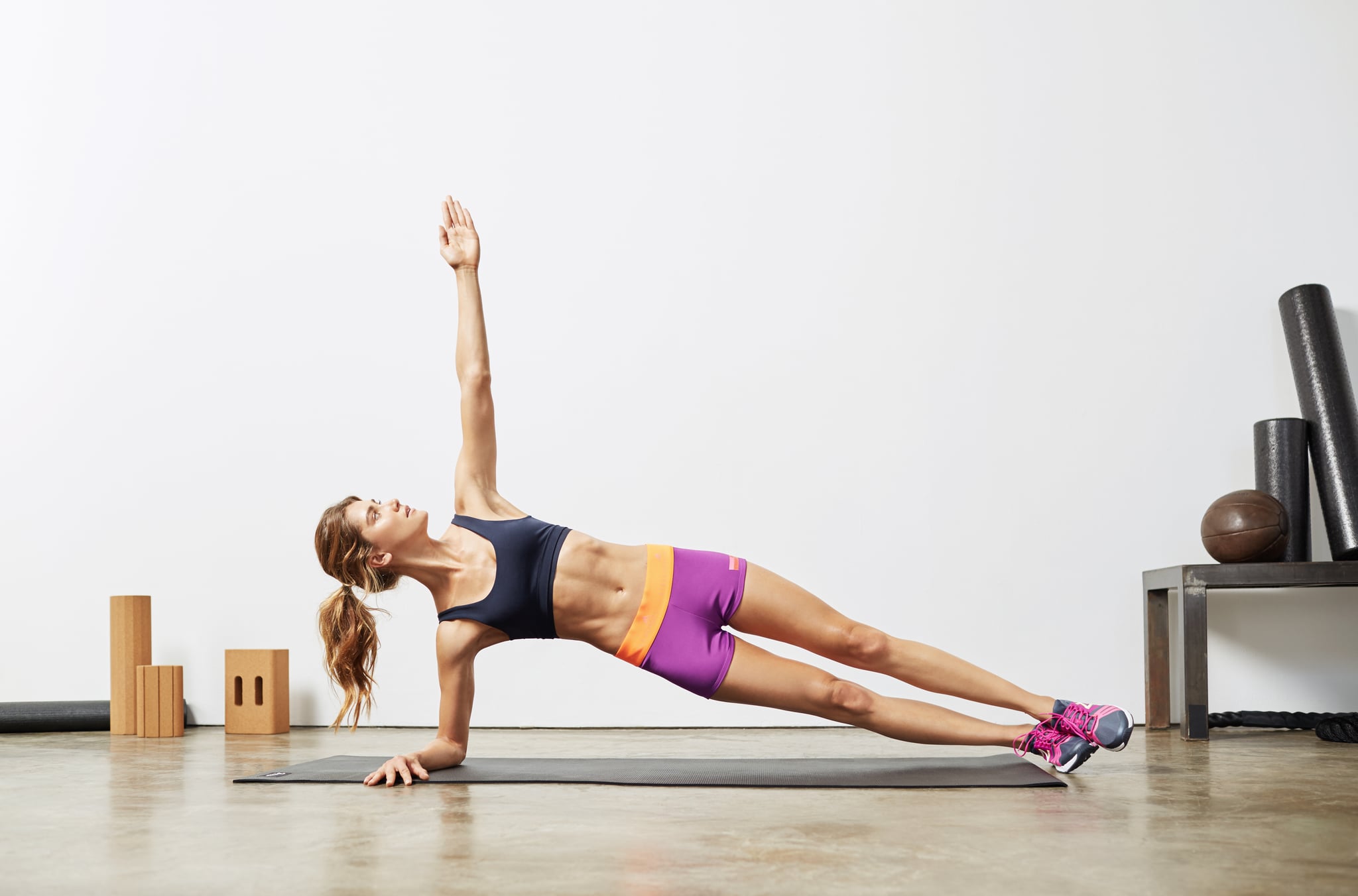

You've probably been taught that before starting a workout, you should warm up by rolling out and doing a few dynamic exercises, and then jump into your workout. I hate to break it to you, but there's an important piece that's being left out of your warmup: activating your core.
You've probably heard "activate your core" hundreds of times in yoga and HIIT classes alike. Your instructors aren't just telling you to do this to impress you. They're saying it because our abdominal muscles play an integral role in movements like getting out of bed, walking, running, and picking things up. Continue reading to find out more about the anatomy of the core and why it's important to activate your abdominal muscles before working out.
Why Your Ab Muscles Are So Important
Your abdominal muscles are made up of your external obliques, internal obliques, transversus abdominis, and rectus abdominis. These muscles form a wall protecting your internal organs and help support the muscles of your spine, allowing you to maintain an erect posture. Your oblique muscles are responsible for side flexion and rotation of your torso, whereas your transverse abdominis muscles are responsible for the stabilization of the lumbar spine and pelvis before upper- and lower-body movements happen. The rectus abdominis muscle, commonly referred to as your six-pack, is an important postural muscle. The abdominal muscles also help with essential tasks like breathing and are turned on when we sneeze, cough, have bowel movements, and give birth. Long story short, your abdominal muscles play an important role in everyday life.
What Activating Your Core Means
The phrase "activate your core" gets thrown around a lot, but what does it really mean and why is it important to do? Core activation simply means using your abdominal muscles to help you perform a series of movements. As you now know, every movement we make, whether it's doing medicine ball slams or sprinting, requires using your core muscles. When your core muscles aren't activated, your form suffers and you increase your risk of injuries.
Take a barbell squat, for example. It's a lower-body exercise that targets your gluteus maximus, quadriceps, and thighs. The movement requires lower-body strength, but without an activated and engaged core, your torso wouldn't be stabilized and you wouldn't be able to hold the weight. Your core is engaged when you lift the weight, lower down into your squat, and stand back up. Without core activation to stabilize your spine, you would more than likely be using your back instead of your legs and glutes to move the weight, which isn't good. By "turning on" your abdominal muscles, not only will you be strengthening your core, but you'll be able to perform exercises more efficiently and with correct form.
How to Activate Your Core
Now that you understand what your abdominal muscles consist of and what activating your core means, it's time to learn how to get your core firing. Before a workout, specifically weightlifting and speed workouts, I lead my clients through a dynamic warmup to get their muscles ready for the load and intensity that awaits them. Once they've completed their drills, they do the following core-activating exercises:
- Plank with knee taps (two sets of 10 reps)
- Plank walkouts (one set of 10 reps)
- Body saws (two sets of 10 reps)
- Glute bridges (two sets of 10 reps)
I have them perform these exercises because they're antirotational (unlike bicycle crunches) and help stabilize the spine. Once they've gone through the core activation exercises, they're ready to workout. These movements alone will suffice as a great ab workout, but that doesn't mean you can't implement more exercises like mountain climbers into your workout.



0 comments :
Post a Comment